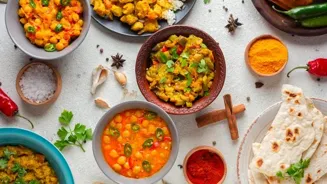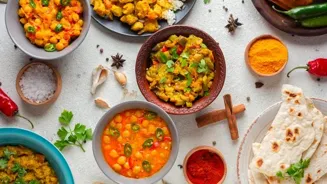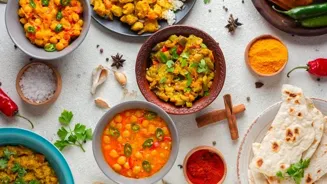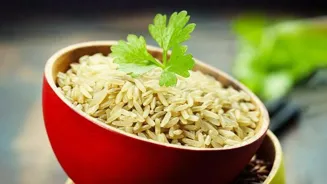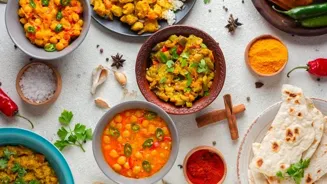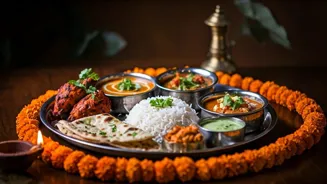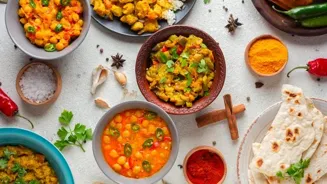Unleash the Magic of Fresh Herbs in Indian Cooking! Elevate your dishes with vibrant flavors and aromas. Learn more!
Fresh herbs – the unsung heroes of the Indian kitchen! We often think of spices like
turmeric, coriander powder, and garam masala as the stars of our dishes, but adding fresh herbs can take your cooking from good to absolutely amazing.

They bring a burst of flavor and aroma that dried spices just can't match. Plus, they add a beautiful touch of freshness and colour to your meals. Don't be intimidated! Using fresh herbs is easier than you think.
This guide will help you unlock the secrets of using these green wonders to elevate your everyday Indian cooking. Now, before you head to the market, let’s get cracking and understand the basics! What herbs are most commonly used in our cuisine, and how should you handle them for the best results?
Indian herbs: Coriander, Mint, Curry Leaves, and Dill
Coriander (Dhania), Mint (Pudina), and Curry Leaves (Kadi Patta) are the holy trinity of Indian herbs. Then we have dill, which is called 'suva' in Hindi. These are easily available in the local market. Coriander is a flavour bomb, lending a citrusy, refreshing touch.
It is used extensively as a garnish, in chutneys, and even added to curries towards the end of cooking. Mint offers a cooling sensation and a unique aroma. It is a star ingredient in chutneys, raitas (yogurt dips), and biryanis. Curry leaves, slightly bitter, are a must-have in South Indian dishes.
They are tempered in oil to release their aroma, infusing the entire dish with their characteristic flavour. Dill is a versatile herb, popularly known as 'suva' in Hindi.
Its feathery leaves have a slightly tangy and grassy flavor, making it a good pair for yogurt-based dishes and vegetable preparations.
Choose fresh, firm herbs for longer shelf life. Refrigerate soft herbs in water-filled jars
Now about selecting these magical herbs. Always choose herbs that look fresh, vibrant and perky. Avoid those that are wilted, bruised or yellowing. The leaves should be firm and fragrant.
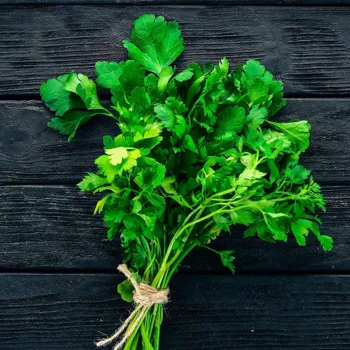
If you're buying herbs with roots, like coriander or mint, make sure the roots are still intact and look healthy. These will last longer if stored properly. When it comes to storing herbs, it depends on the type. Soft herbs like coriander, mint, and dill can be stored in the refrigerator.
One easy way is to trim the stems, place the herbs in a glass jar filled with water, and cover the leaves loosely with a plastic bag. This helps keep them hydrated. A different method is wrapping the herbs in a slightly damp paper towel and storing them in a plastic bag in the fridge.
Curry leaves, being hardier, can be stored in an airtight container in the fridge.
Adding herbs at specific times enhances flavor in dishes
When to add the herbs matters a lot. Soft herbs like coriander, mint, and dill are best added towards the end of cooking or as a garnish. This is because their delicate flavours can easily be lost when exposed to high heat for too long.

This will add a freshness to the dish and retain its natural ingredients. For curry leaves, the best approach is to temper them in hot oil at the beginning of the cooking process. This releases their flavour and infuses the oil with their aroma, which then permeates the entire dish.
This is what is commonly done in South Indian cooking. If you are using chopped fresh herbs in a dough for rotis or parathas, add them along with the other ingredients and knead well. This will ensure the flavour is evenly distributed throughout the roti.
Blend coriander, green chillies, mint for versatile chutneys, raita, and curries
For a simple coriander chutney, blend together fresh coriander leaves, green chillies, ginger, garlic, lemon juice, and a little salt. This chutney goes well with almost anything – from dosas to samosas to grilled sandwiches!
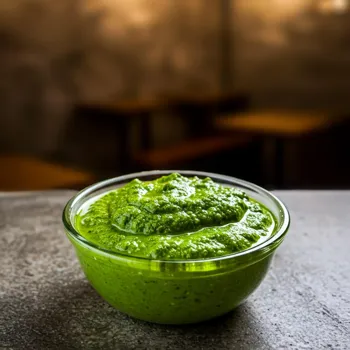
Mint chutney can be made in a similar fashion, replacing coriander with mint. To make a flavourful raita, whisk together plain yogurt, finely chopped mint, coriander, and a pinch of roasted cumin powder. Season with salt to taste.
For any sabji or curry preparations, a handful of chopped coriander or dill, scattered over the top just before serving, adds a burst of freshness and visual appeal. You can also add a sprinkle of lemon juice at the end to brighten the flavours even further.
Experiment with herbs for unique flavors in cooking; have fun!
Do not be afraid to experiment; that is the key! Try adding chopped mint to your aloo paratha dough for a refreshing twist. Or, add a handful of chopped dill to your dal tadka for a unique flavour profile.
In South Indian dishes like sambar or rasam, don't be shy about adding a generous sprig of curry leaves. Their aroma is what makes these dishes so special. Explore different combinations of herbs to find your favourite flavour pairings. You might be surprised at what culinary magic you can create!
Remember, there are no strict rules when it comes to cooking. The most important thing is to have fun and enjoy the process.
Embrace fresh herbs for vibrant, flavorful Indian cooking
So, there you have it – a simple guide to using fresh herbs in your Indian cooking. With a little practice, you'll be able to confidently incorporate these flavourful ingredients into your everyday meals. Your taste buds (and your family!) will thank you for it.
Now, go forth and herb your way to deliciousness! By embracing fresh herbs, you’re not just adding flavour; you're adding a touch of vibrancy and freshness to your dishes. And who wouldn’t want that? Happy cooking!
Remember to experiment, have fun, and enjoy the process of discovering your personal favourite herb combinations. The possibilities are endless!
AI Generated Content. Glance/InMobi shall have no liability for the content